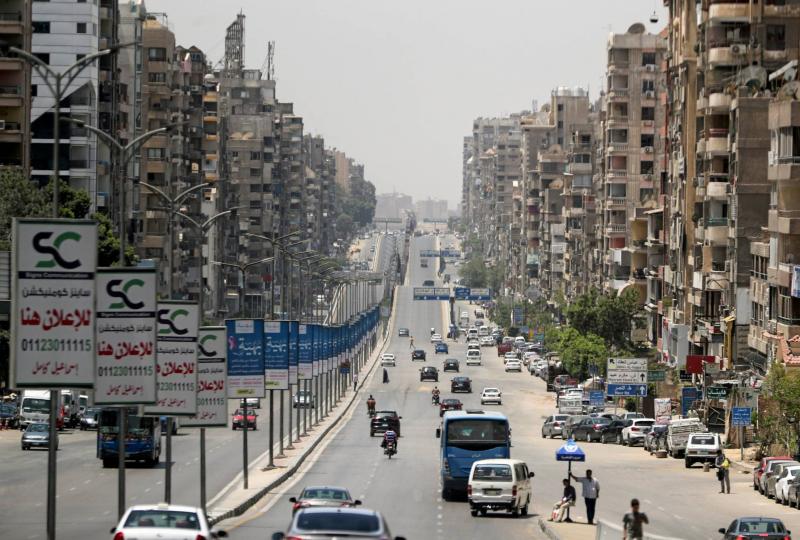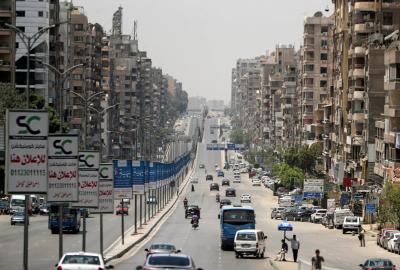Egypt is facing an increasingly challenging task of gathering the necessary liquidity to service its external debt, following a fourfold increase in foreign borrowing over the past eight years. This borrowing has been aimed at financing the construction of a new capital, building infrastructure, purchasing weapons, and supporting an overvalued currency. Few of Egypt's large projects are yielding additional flows of hard currency, while foreign investors have compounded the issues by shying away from Egypt and other emerging markets since the outbreak of the Ukrainian war and the rise in global borrowing costs. The government asserts that it will meet its repayment obligations; however, it has not implemented the structural economic changes it has long promised. Additionally, its efforts to raise liquidity through the sale of state-owned companies have not resulted in the sale of any key assets in hard currency for nearly a year.
Large projects will not quickly bring in foreign currency. Investors have long urged a more flexible currency. However, the Egyptian pound has remained stable against the dollar for three months despite a promise to the IMF to free it within a financial package valued at $3 billion, agreed upon in December. Amid the scarcity of foreign currency, Egypt has withdrawn over $40 billion from net foreign assets in the banking system over the past two years, part of which was used to support the pound.
Prime Minister Mostafa Madbouly has sought to reassure investors about the nation's financial situation, stating, "I assure you that the Egyptian state has not and will not default on any international obligations." Egypt has indicated it will fulfill its external obligations and will raise funds through asset sales, aiming for $2 billion by the end of June. Two of Egypt's main sources of foreign currency, tourism and Suez Canal transit fees, have seen increases. However, bankers note that remittances from Egyptians working abroad—a significant source of foreign currency—have declined due to a larger number of people transferring their money through the black market. The official exchange rate stands at about 31 pounds to the dollar, while the black market rate reaches around 39 pounds.
The shortage of hard currency has raised concerns about Egypt's ability to service its external debt. Since April, the three major credit rating agencies have downgraded their outlook on Egypt’s debt. Moody's noted, "The large maturity dates of Egypt's external debt are becoming an increasing challenge." Central bank data last week showed that upcoming payments include $2.49 billion in short-term debt due in June, while the second half of 2023 will see $3.86 billion in short-term debt and $11.38 billion in long-term debt. Some of this debt is owed to friendly countries, like Egypt's Gulf allies. Based on past experiences, they are likely to extend the maturity of deposits they have at the Central Bank of Egypt, which are close to a total of $30 billion.
Other debts are due to less lenient lenders, such as the IMF, to which Egypt must repay $2.95 billion by the end of 2023, as well as foreign bondholders, who are due $1.58 billion. The repayment schedule remains daunting in the subsequent years. The payments to the IMF and foreign bondholders alone, approximately $4.5 billion, comprise more than half of Egypt's annual revenues from the Suez Canal, which total $8 billion.
The recklessness in borrowing in Egypt began with the economic conference held in March 2015, less than a year after President Abdel Fattah el-Sisi took office, when a series of mega-projects, including the new administrative capital and three power plants, were announced. The reassurance provided by agreements with the IMF in 2016 and 2020 attracted multilateral lenders, foreign governments, and investment institutions. Egypt, which hosted the COP 27 climate summit last year, also benefited from a wave of green financing.
Central bank data revealed that foreign loans jumped to $162.9 billion by December 2022, up from less than $40 billion in 2015. Borrowing surged by $8 billion in the last quarter of 2022 alone. Farouk Soussa, an economist at Goldman Sachs, stated, "Egypt gained the admiration of the IMF and investors for what it was doing to stabilize the macroeconomy." He added, "Investments have not delivered the expected return in terms of enhancing the capacity to service external debt."
Economic experts suggest that Egypt—home to 105 million people—is one of the world's largest wheat importers and also relies on imports for other food items and fuel—has spent much borrowed money on projects that will not yield quick returns of the hard currency the country needs. Projects include the new administrative capital, which will cost $58 billion to build east of Cairo, a $25 billion nuclear power plant on the Mediterranean coast, and the establishment of a 2,000-kilometer high-speed rail network that will be the sixth largest in the world, with Egyptian presidency stating it will cost $23 billion. From 2015 to 2019, Egypt became the world's third-largest arms importer, contracting at least 54 arms orders, according to the Stockholm International Peace Research Institute.




